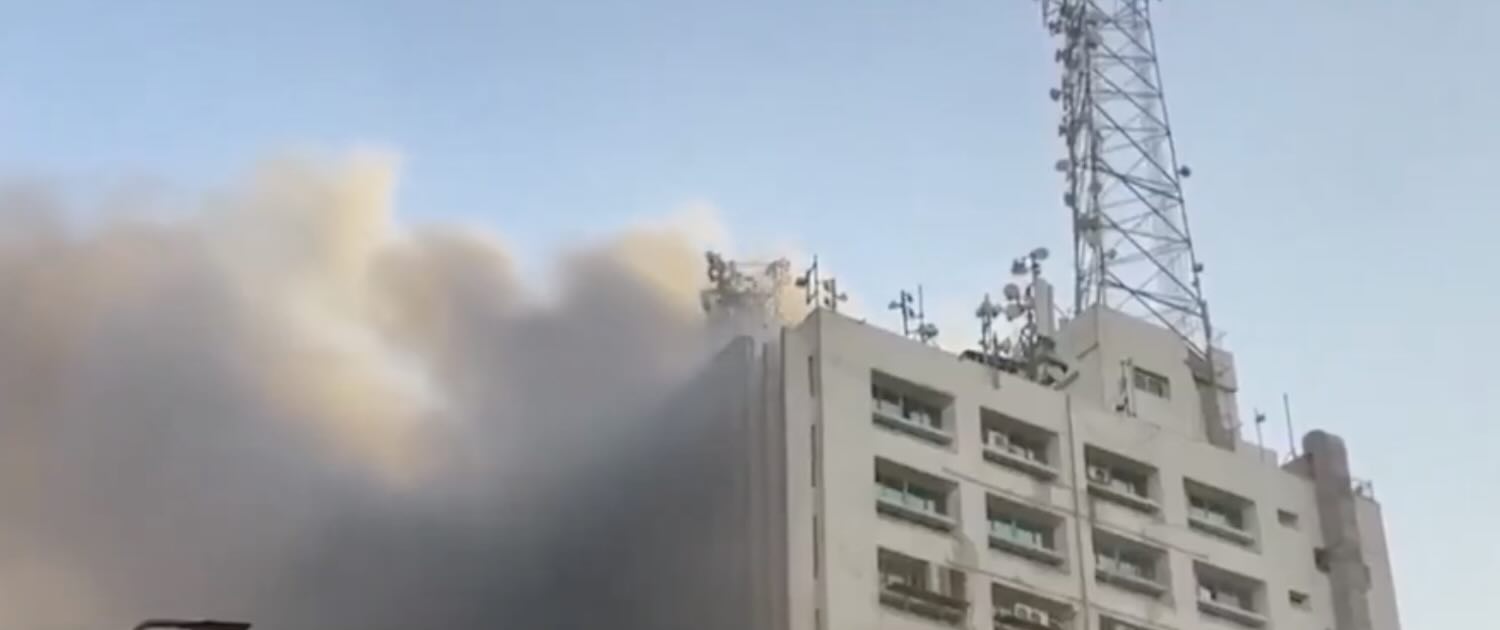- A fire in a major Internet hub in Cairo has significantly disrupted multiple major Internet service providers (ISPs) in the country.
- Egypt’s very poor ISP market competition places its Internet resilience at risk.
- Greater competition, as well as developing its locally hosted and distributed content infrastructure, can improve Egypt’s long-term Internet development and resilience.
Yesterday, Tuesday, 8 July, a fire broke out at the Ramses Central building in Cairo, Egypt, claiming at least four lives, injuring 39 others, and significantly disrupting the Internet and telecommunication services of the country.
The building hosts the Ramses Internet Exchange, which is a major interconnection point for Internet, voice, and data services for the nation’s top telecommunication providers, including Etisalat, Mobinil, Orange, and Vodafone.
This event mirrors one in Bangladesh 21 months earlier, when a fire in a central telecommunications and data hub in Dhaka significantly impacted the country’s Internet connectivity and performance.
In this recent case, IODA data shows that Egypt’s Internet connectivity dropped by around 15% and has remained at 93% since 14:30 UTC.
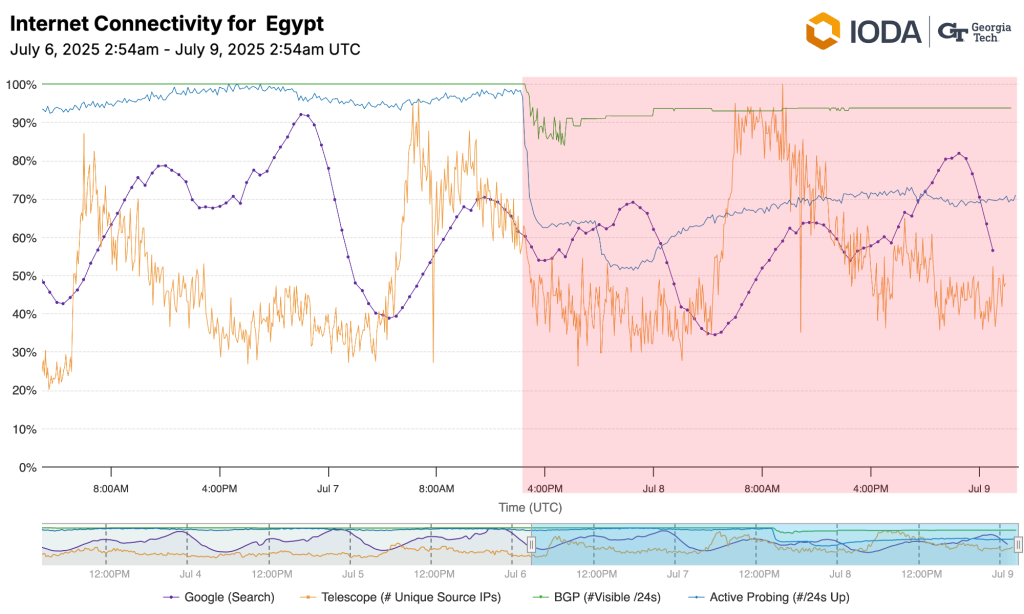
Cloudflare Radar is tracking a similar drop in overall connectivity for the country and shows the impact varies per network (Figure 2) with Etisalat (AS36992), Link.Net (AS24863, a subsidiary of Orange Telecom), Mobinil (AS37069), Raya (AS24835, a subsidiary of Vodafone Egypt) experiencing more than 80% drops in connectivity and as per writing were all recovering.

Egypt’s largest Internet Service Provider (ISP), Telecom Egypt (AS8452), was unaffected by the fire. In fact, its traffic grew significantly from the previous 24 hours (Figure 3), most likely as it handled greater capacity from other networks, especially during peak nighttime (18:30-21:00 UTC).
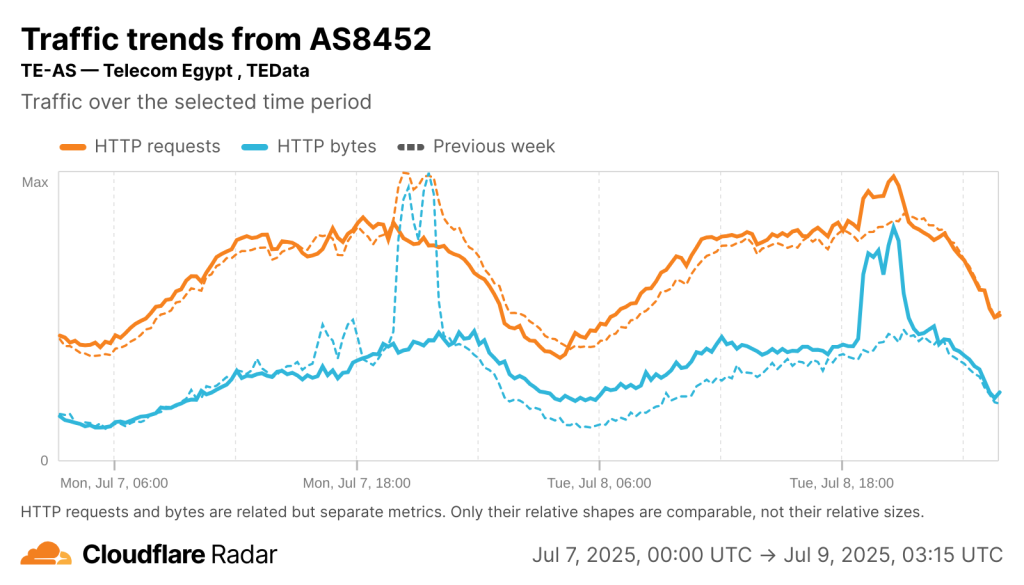
Telecom Egypt’s significant market share (Figure 4) is one reason why the impact is not as widely felt across the country. While in this instance it is fortuitous, when something does happen to Telecom Egypt’s network, the country is expected to be significantly hampered.
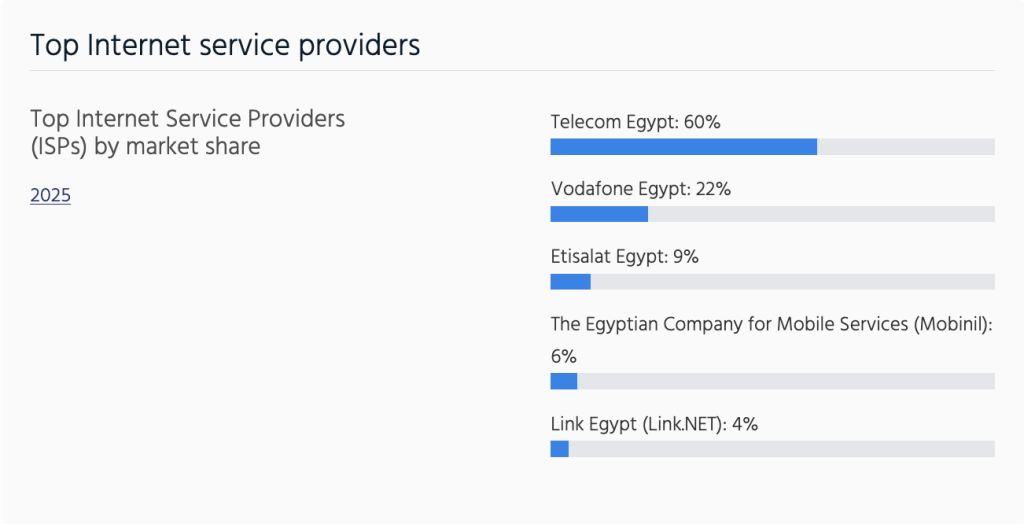
Egypt is one of 114 countries with a Very Poor Market Competition rating, per the Pulse Country Reports. The Internet’s success and resilience are largely due to the interconnectivity of the global network. The more networks that connect with one another, the more routes businesses and end users can choose from to share and get products and services.
Read: Where Is Market Competition Improving
During an Internet Society Egypt Chapter (Internet Misr) workshop in Cairo in February, the Pulse team discussed Egypt’s current market situation with a range of stakeholders. We, with our local chapter, advocated that healthy competition is critical for increasing consumer choice, which can reduce prices and foster innovation, efficiency, and quality as competing businesses seek to differentiate their products from each other. The Internet Society Egypt Chapter President, Amr Hashem, reiterated this need for diversification to strengthen the country’s overall resilience in an Istithmark news story following yesterday’s events.
Local Hosted Data Also Critical During Outages
Another important aspect of this event to consider is the importance of data centers and Internet Exchange Points (IXPs) serving local content. According to PeeringDB data, Egypt currently has three IXPs, including Ramses Internet Exchange, and six data centers.
Aside from the number of IXPs, their geographical spread and the number of networks connecting to them are equally important, as are the upstream providers to whom smaller networks are connecting via the IXP. In this case, many of the affected ISPs rely on Telecom Egypt as their uplink and interconnect through the Ramses Exchange.
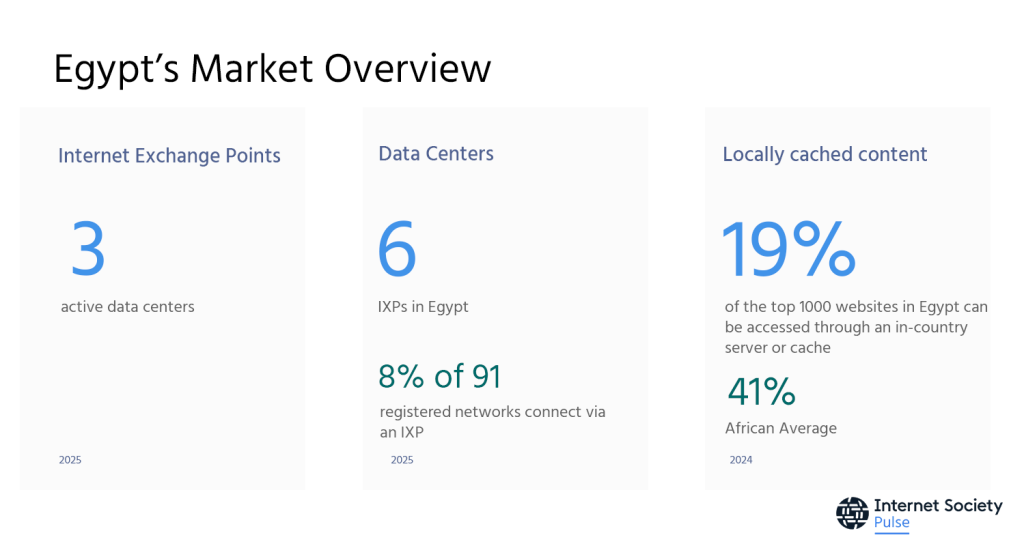
Data centers play an increasingly important role in the Internet as they allow providers of data-intensive services such as video streaming to store local copies of content closer to Internet users. This reduces the time (latency) it takes to receive such content, which traditionally you would have had to access via another country. According to the Pulse Country Reports, Egypt currently hosts 19% of its Internet users’ top 1,000 most popular Internet services.
With such a relatively low number of locally hosted content and means to host and distribute it locally, the effect of having the connectivity of four of the top six ISPs slashed was always going to be felt by the affected users.
Review the resilience of your country’s market competition via the Pulse Country Reports.

